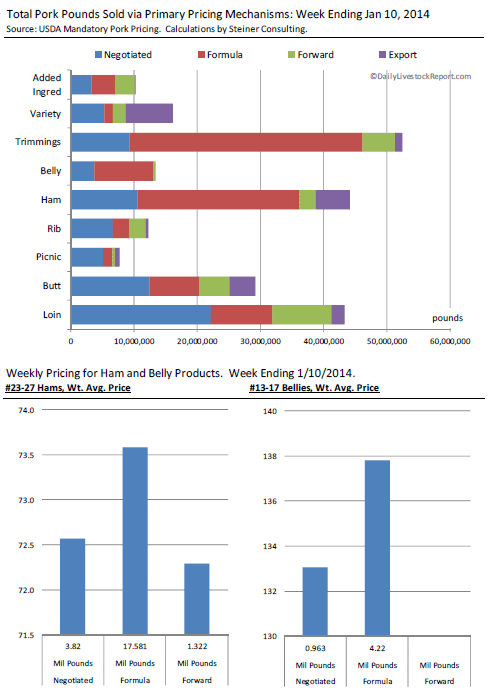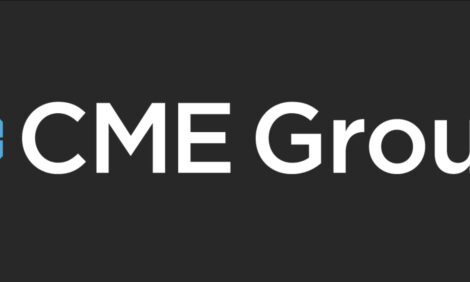



CME: USDA Begins Reporting on Pork Formula Sales
US - The pricing picture for pork should become clearer now that USDA has begun reporting on pork formula sales, forward sales and export sales. The data will be provided weekly by USDA and we suspect at some point USDA will provide a comprehensive pork cutout similar to the one for beef, write Steve Meyer and Len Steiner.The first report has already been posted for the week ending 10 January and can be accessed on the AMS/USDA website. While in the short term we expect this to complicate somewhat the overall hog/ pork market picture, overt time we think the additional information should help provide for a more transparent pricing environment.
In recent years, market participants have moved towards pricing a larger portion of the supply using both formulas off the negotiated sheet as well as negotiated mechanisms for pricing product for delivery in the future (+15 days for boxes and +11 days for combos).
For the week ending 10 January, USDA reported that about 228.9 million pounds of pork were priced and reported through the Mandatory Price Reporting system. For your reference, total pork production for the week was 446.3 million pounds. Of this total amount reported, 78.7 million pounds or 34 per cent were priced through negotiated trading.
Formula pricing accounted for 98.8 million pounds (43 per cent), forward pricing covered about 30.3 million pounds (13 per cent) while export sales accounted for the remaining 21.1 million pounds (9 per cent). This is for the total supply reported. In some pork categories, especially those that go into the retail meat case, negotiated trading still makes up the bulk of the volume.
Total loin volume for the week was pegged at 43.3 million pounds and negotiated sales accounted for about 51 per cent of the total volume. However, in the case of ham, about 58 per cent of a total volume of 44.2 million pounds was priced on some sort of formula basis while for bellies and trimmings, formula pricing accounted for 69 per cent and 70 per cent, respectively.
As for pricing, we will need to see a bit more data in order to come up with any meaningful conclusions. Based on this very first report, it would appear that formula prices for the most part reflect slightly higher prices than negotiated trades. But again, this could be because the formula trades reflect lags (i.e. they are priced using prices from the previous week).
They also may include specific factors that are dependent on seasonality or other market factors. It is simply too early to tell. The difference in pices for various cuts certainly will change the cutout values reported for various primals and eventually the comprehensive cutout. The lower chart below illustrates the point, showing the variability in the pricing of 23-27# hams and 13-17# bellies.

Bottom line: The additional pork reports are welcome additions both in terms of market transparency but also in highlighting a major issue for price discovery going forward: the increasing reliance on formula prices among both beef and pork buyers.
CME Notice: We have attached to this update a CME proposal regarding changes to delivery specifications for the live cattle contract. CME is currently evaluating a recommendation to change the live cattle contract specs so as to allow heifer delivery against the live contract. This is not a final rule and CME Group welcomes feedback from industry. The deadline to submit feedback is 28 January. See the next few pages for all details.






